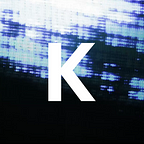Tarot Redealt
The art and transformation of card reading
STORY BY BECCA FREIMUTH
photos by Jake Parrish
Sitting in the back of Stone Moon, a store in downtown Bellingham, Jordan Langen takes a deep breath and plants her feet on the ground, straightening her posture. She watches as her client shuffles a handful of 78 laminated cards decorated with earthy colors and dreamy characters; she begins to concentrate on the energy in the room.
Langen, 28, a professional tarot card reader, begins to feel the tension build. Is the client nervous? Stressed? Slowly the cards are passed over to Langen, and she deals them into a clearly memorized pattern on the table.
“Are you ready to begin?” she says.
Over the past four decades, the culture surrounding tarot cards has revolutionized. What once was considered witchcraft and a farce has now become a tool for making life decisions and finding inner wisdom.
“When I do tarot, it’s like opening a big set of doors and I am able to express all the emotions I feel,” Langen says.
She compares a successful reading to people at a party. With different personalities, the cards come together to form relationships with other cards. Good readers are able to read the personalities and see how they combine, Langen says.
When Laura Abernathy, 60, began using tarot cards at the age of 18, four main decks were used. As a life coach and founder of the Tree of Life Sanctuary, a spiritual school on Holly Street, Abernathy watched the “negative, evil and threatening” deck expand into a means of creative expression. Over a thousand tarot decks now circulate, many handmade by readers, Abernathy says.
“We are actually more than the body. We have a field around us that we just haven’t learned to see yet.”
In Helen Farley’s book, published in 2009, A Cultural History of Tarot: From Entertainment to Esotericism, she discusses the transformation of tarot cards from playing cards for nobility, during the Renaissance, into “a diagnostic tool for mind, body and spirit.”
“Scientifically, the origin of tarot is only conjecture which is amazing,” Abernathy says. “It’s like the cards sort of sprung up and it was just a small group of people who used them for spiritual purposes.”
Judyth Sult, an empowerment coach in Bellingham, uses tarot with her clients and relates the old decks to conventional traditions. The unrelatable cards of kings, queens and knights in traditional decks make tarot limiting and up to negative interpretation in today’s culture, she says. Instead, Sult’s deck consists of the dalai lama and wisdom cards: student, apprentice, teacher and sage, which represent growth.
Sult uses the cards to tell a story for her clients, allowing them to walk away from the reading with new knowledge about themselves and direction on where to go next in life, she says.
Langen believes tarot is not mystical, but rather a psychological exercise where emotions and feelings are being transferred into objects.
As a child, Langen found herself making emotional connections with objects instead of other children. She would “put her love” into these items — especially one special heart-shaped ring.
Langen would say, “I am just going to pretend my love is a liquid and I am going to pour it into this gem.” She took this passion and invested it in others through tarot.
While some readers shuffle the cards for the client, Langen has her clients shuffle the cards before the reading. She believes that a person’s energy is transferred into the cards during the shuffle — allowing her to connect with them on a spiritual level.
“I don’t want to claim that I am the all-knowing power and that I am just passing that down,” Langen says. She believes that everyone has power and a tarot reading is combining those powers to create a mutual experience.
When Sult started reading tarot 35 years ago it was built on the old interpretation of fear, fortunetelling and dependency, she says. Due to influential female authors in the 1980s the attitude toward tarot shifted, and the cards became more about choices and not fear.
Sult uses tarot as a tool for children to communicate with their parents about what is happening in their life, whether it’s bullying or the effects of an argument between the parents on the child.
“It opened up an opportunity for the children to talk to them. That to me is revolutionary. That wouldn’t have happened 30 years ago,” Sult says.
Abernathy focuses on the client’s subconscious in order to use tarot as a key to unlock these types of conversation. She believes that the client knows the answers subconsciously and just needs a tool to discover them.
“We are actually more than the body,” she says. ”We have a field around us that we just haven’t learned to see yet.”
Abernathy stresses the importance of becoming consciously aware that humans are more than physical beings. The energetic and biochemical part of humans effect beliefs, thoughts and emotions.
“All of this is about helping the human species make the next leap into a new way of being human,” Abernathy says.
As Langen finishes her last reading for the day, she shuffles through her handmade deck of tarot cards. She realizes that she is part of something bigger than herself and is no longer static as a person. With tarot, Langen hopes to encourage other people to tune into their energy and connect with life on a higher level.
